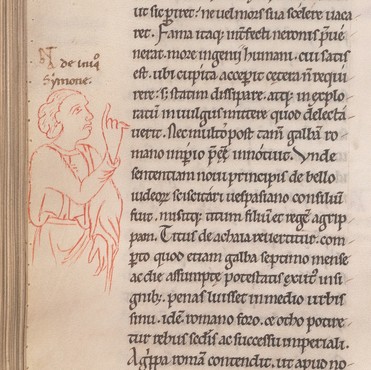This month celebrity continues to be an irresistible draw. This article, published in Ebony in 1952, documents the sartorial habits of a star: “Before each performance, [Dorothy] Dandridge tries to sense the flavor of each particular audience before making final selection of a gown…” Patent letters are enforceable only after being signed by the third, fourth, and fifth United States presidents. This photograph shows how experimental filmmakers Marie Menken and Willard Maas practice interior design: with shells, butterflies, and floating disembodied heads.
Patrons requested digital facsimiles of works by artists of renown. Bruce Nugent’s ink drawings feature dynamically posed women in exquisite dress. Saul Steinberg’s sketches capture vehicles, landmarks, and the fantastic. This nota bene, however, was drawn by an unknown hand. New Haven resident Katharine Hastings created her own sketches as an adolescent at the end of the 19th century. One illustrates “the obstinate little Carrington girl.” Hastings’ interest in kids behaving badly was coincidentally shared by John Henderson, whose library contained the similarly titled “A pretie and Mery New Enterlude called the Diʃobedient Childe”.
Those interested in the social history of children and/or New Haven can also peruse two scrapbooks of photographs and advertisements for products created by the A. C. Gilbert Company in New Haven from 1909 - 1967. In addition to juicers, fans, vacuums, and nail care products, the Gilbert Company manufactured toys—notably the first erector sets. Contained here are advertisements for models, photographs of in-store displays, and collages of prize-winning projects by North American boys. Flattened boxes for chemistry, glass blowing, magic, and basket kits are also collected.
Useful Vocabulary Corner
A group of horses (say, for example, eleven) is sometimes called a harras.
